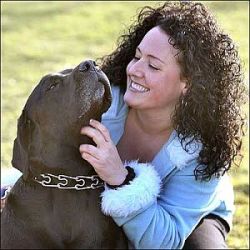De-worming Medicine is
generally termed as Anthelmintics. They are
highly effective in eliminating parasites from the body.
A parasitic disease is defined
as an infectious disease transmitted by organisms such as helminths,
ectoparasites or protozoa. For instance, helminths cause ascariasis and certain
protozoa cause malaria. Helminthes and protozoa are endoparasites, meaning that
they live inside the body of host, whereas ectoparasites live on the host’s
body surface.
The symptoms of parasitic
infections vary from being mere botherations to being life threatening,
depending upon the type of parasite. Commonly observed symptoms of parasitic
infections include watery diarrhea, nausea, abdominal pain, weakness, aching
joints and muscles, swollen lymph nodes, stomach cramps and moderate fever.
Certain parasites may gradually
become immune to drugs; hence multiple doses may be needed for the complete
recovery. The treatment needs to be handled in a delicate manner by a veterinarian,
since anthelmintics may weaken the parasitic host for short periods.
Beginning with small doses is
the safest way, as anthelmintic medicines in heavy doses may lead to some
complications. This is the reason; Vets determine the doses based upon the
seriousness of the infection and the phase of life cycle of parasites during
the treatment.
 How
does it Work?
How
does it Work?
Anthelmintics are classified
into 2 types viz vermicides and vermifuges. Vermicides destroy parasites such
as helminths and protozoa in the gut; whereas vermifuges eliminate dead
parasites from the body. Certain anthelmintics have the capacity to exterminate
a single parasite whereas others are broad spectrum and can kill several
species of parasites.
People sharing a close
proximity with farm animals should be extra prudent and practice precautionary
measures since they are more prone to catching a parasitic infection.
Treatment
for Parasitic Infection
A broad range of anthelmintics
is available for a variety of infections. Stromectol ranks among the few safest
and the best anthelmintics for the treatment of parasitic infections.
Stromectol contains an active ingredient called Ivermectin and it treats the
infection by expelling out parasites comparatively quickly.







.jpg)



.jpg)

.jpg)
.jpg)
.jpg)



.jpg)


.jpg)
.jpg)
.jpg)

.jpg)







